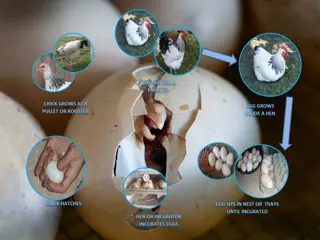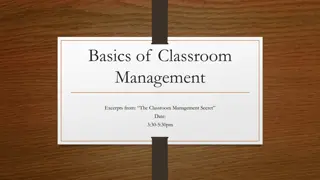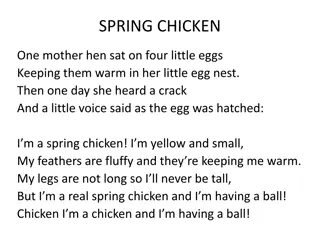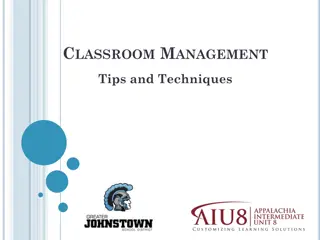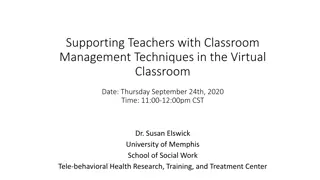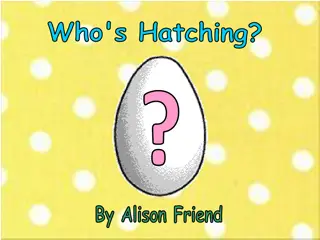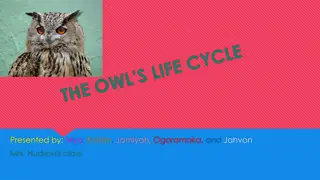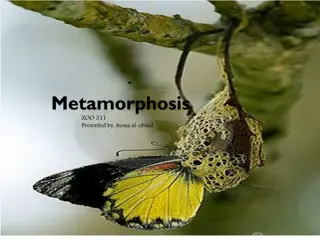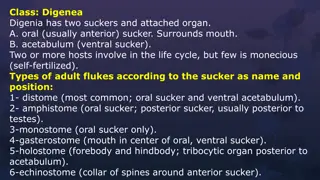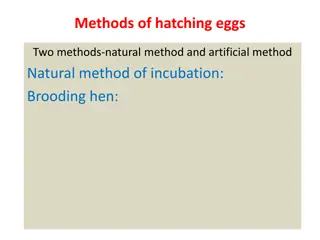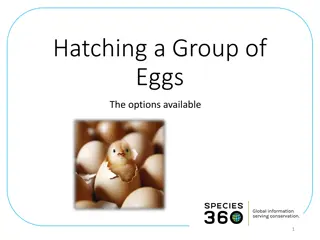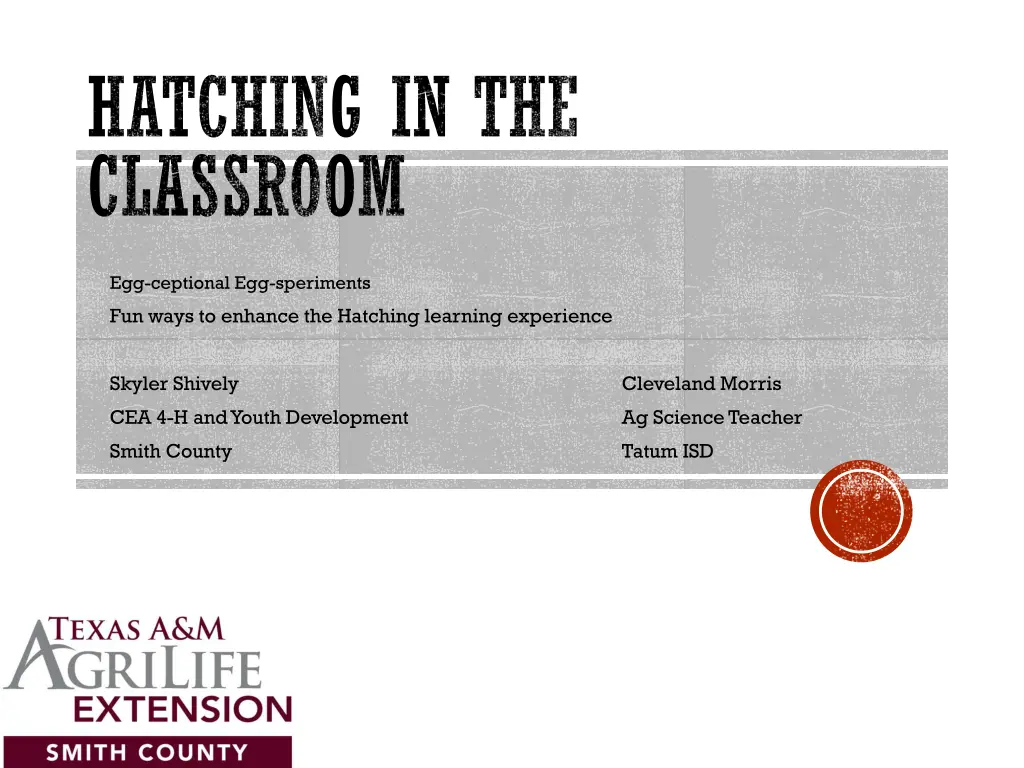
Egg-speriments for Enhanced Hatching Learning Experience
Discover fun and educational ways to enhance the hatching learning experience in the classroom. From setting up with fertile eggs to conducting egg-strength experiments, this guide offers a variety of activities to engage students in the hatching process. Get ready to hatch some learning!
Download Presentation

Please find below an Image/Link to download the presentation.
The content on the website is provided AS IS for your information and personal use only. It may not be sold, licensed, or shared on other websites without obtaining consent from the author. If you encounter any issues during the download, it is possible that the publisher has removed the file from their server.
You are allowed to download the files provided on this website for personal or commercial use, subject to the condition that they are used lawfully. All files are the property of their respective owners.
The content on the website is provided AS IS for your information and personal use only. It may not be sold, licensed, or shared on other websites without obtaining consent from the author.
E N D
Presentation Transcript
HATCHING IN THE CLASSROOM Egg-ceptional Egg-speriments Fun ways to enhance the Hatching learning experience Skyler Shively Cleveland Morris CEA 4-H and Youth Development Ag Science Teacher Smith County Tatum ISD
SETTING UP Locate a source of Fertile eggs. You can t do this program with out a good source of Fertilized eggs. Decide if you will conduct all of the activitie. Also discuss which activities to conduct. http://urbanext.illinois.edu/eggs/pdfs/worksheets.pdf This website is a great source of handouts. Determine who will bring necessary supplies. Get your Pre-Test ready.
SETTING UP Be sure and Locate a source of Fertile eggs well in advance. Where can you get fertile eggs? Texas A&M Poultry Center http://posc.tamu.edu/texas-agrilife- poultry-extension-specialists/youth-programs/ Local hatchery Local producer Where you are located will make a difference on where you procure your eggs.
READY, SET, GROW Start a Chick Journal Week 1: Set Eggs Discuss Hatching Factors Time (21 Days) Temperature (100 Degrees F) Rotation Humidity (Nature vs. Incubator)
READY, SET, GROW Parts of the Egg Use real eggs to teach this. Have some fertile and non-fertile eggs to look at. Weigh the different parts. The Biggest Loser Ask students to write in their Chick Journal if they think that the eggs will lose weight, gain weight, or stay the same as the embryo grows. This is a good place to teach about Hypotheses Create a chart for the kids to record the egg weights each day.
LET THE FUN BEGIN Week 2: Egg strength Experiments How much Weight can 6 Egg Shells Hold? How much weight can 6 whole eggs hold? Can you break an egg with your bare hands? Egg Drop Egg Porosity Are Eggs Porous?
EGG STRENGTH How Much Weight will six Egg shells hold? Supplies: Six empty egg shells Books of varying sizes Procedure: Set egg shells in two rows, equal distance apart Start stacking books on them. See how much weight the shells held before breaking
EGG STRENGTH How much weight will six whole eggs hold? Supplies: Six whole eggs Books of varying sizes Gallon freezer bag Procedure: place six eggs in freezer bag close together Stack books on the eggs until they break. How much weight did the eggs hold?
EGG STRENGTH The Strong Man experiment Supplies: A whole egg Trashcan Procedure: Take the egg and check it for any cracks Place the egg in your hands with the ends in the hollows of your palms Lace your fingers and try to break the egg. Talk about why the egg is so strong.
EGG POROSITY Do eggs have pores/holes in them? Supplies Hard boiled eggs Food Coloring Gloves Bowls Procedure Ask kids if the eggs have holes in them Give each group an egg and some food coloring Have them drip food dye on the outside of the egg Wait 15 mins and then have them peel the egg. Did the dye go through? Why? Discuss porosity.
ARE YOU IN THERE?? Candling the Eggs Use this process to cull your eggs Have the kids draw what they saw in their Chick Journal Open cull eggs This is a good time to study the weight chart and see who had a correct hypothesis and discuss why the eggs that were growing lost weight.
CHICK MAKE-OVER Supplies Needed: Eggs that are 11-14 Days into the incubation process Regular food dye (not gel) 1 or 3cc syringes (one for each color used) 25g x 5/8in (can use 22gx1in) in needles (one for each egg injected plus a few extras) Scotch Tape Alcohol Wipes or Hand Sanitizer Procedure: Prior to beginning, prepare your syringes with approximately .5-1 cc of dye Candle the eggs you intend to dye and remove any that are not viable. Using the alcohol wipe clean a small area on the small end of the egg Carefully insert the needle into the clean spot and slowly inject the dye. Re-clean the injection area with an alcohol wipe Cover injection hole with Scotch Tape. Replace egg in the incubator.
PREPARING TO HATCH Make sure the eggs are taken out of the turner on Day 18 of incubation Increase the amount of water in the incubator Use an old hand/kitchen towel in bottom of incubator to make clean-up much easier
HAPPY BIRTHDAY! This is probably close to the end of your program but here are some other activities that you can do or have the teacher do. Point out the Egg tooth to the students If they will be keeping chicks for a little while, have them chart the weights of the dyed chicks. Have the kids teach other students what they have learned. Write a Chick Newspaper to send to parents, principles, etc.
HELPFUL WEBSITES ETC. http://www.4-hcurriculum.org/product.aspx?id=1370&c=Embryology : Embryology in Classroom set of 2 books. Magic School Bus Cracks a Yolk Discover Streaming or http://www.youtube.com/watch?v=jaSa6qXVQk4 http://chickscope.beckman.uiuc.edu/explore/embryology/ How Its Made: Hatchery Video http://www.youtube.com/watch?v=bkuohLV2u0k http://urbanext.illinois.edu/eggs/pdfs/worksheets.pdf ( excellent source of handouts and activities) And when all else fails: GOOGLE
THANK YOU FOR YOUR TIME This powerpoint adapted from Sarah Broad M.S. CEA Texas A&M Agrilife Extension Service




